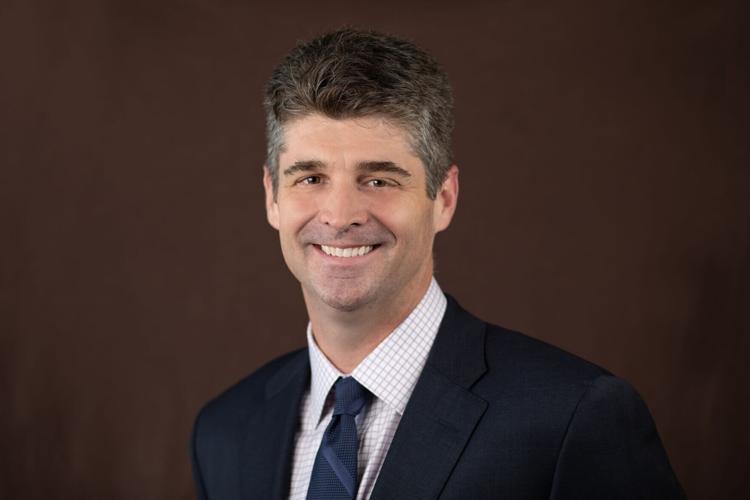The has a record high of $113.9 billion in its trust fund to pay for long-term retirement obligations for almost 830,000 current and former public employees, many of them public school teachers.
The fund got a boost from the retirement systemŌĆÖs market investments, which earned a return of 9.9% in the fiscal year that ended on June 30.
The return far surpasses the 6.75% return that the assumes in setting contribution rates for state and local employers to help fund the long-term pension liabilities for teachers, state and local employees, retirees and others who invested in the system before leaving their public jobs.
People are also reading…
ŌĆ£As a long-term investor, VRS has positioned the fund to meet its obligations to our teachers, first responders and other public servants now and well into the future,ŌĆØ VRS Chairman Scott Andrews said in announcing the investment results.
However, the retirement systemŌĆÖs return did not meet its internal benchmark of 11.6% for what it should have earned in markets for stocks, bonds and a range of specialized investments.
The VRS exceeded its benchmark returns for public equity stock, fixed income and other investment classes, but fell short in private equity markets and private investment partnerships that depend on them. The system exceeded all of its benchmarks over five, 10 and 20 years.
ŌĆ£Our work is focused on generating long-term returns while managing risks,ŌĆØ said . ŌĆ£A highly diversified portfolio is essential to our strategy.ŌĆØ
Criticism from former member
The VRS boardŌĆÖs approach continues to draw criticism from one of its former members, Ed Burton, a University of Virginia economics professor and the longest-serving trustee in the retirement systemŌĆÖs history, with a total of 17 years in two stints on the board.
Burton says that VRS should invest in indexed funds for stocks and bonds instead of relying on a large internal staff to manage investments in more specialized sectors, such as private equity, real estate assets and credit strategies.
He recently noted that investing 60% of VRS assets in the S&P 500 Index for public equities and 40% in the Bloomberg Aggregate for fixed income would have produced a 16% return in the last fiscal year ŌĆ£with essentially no fees, no investments staff, no board meetings.ŌĆØ
But VRS said those investments can lose money, too, as they did during the Great Recession in 2008-2009, when the systemŌĆÖs investments lost 21% of their value and contributed to unfunded long-term liabilities that the state is still paying off.
Those unfunded liabilities also reflect consistent past state underfunding of its share of retirement costs for state employees, teachers and others. Passage of sweeping reforms in 2012 required the state to begin repaying pension liabilities it had left unfunded to protect the state budget during the recession.
ŌĆ£VRS focuses on long-term returns and adheres to the Code of Virginia requirement to minimize the risk of large losses,ŌĆØ spokesperson Jeanne Chenault said in response to BurtonŌĆÖs recent comments. ŌĆ£To achieve this, VRS invests in a very diversified portfolio across a number of different asset classes and strategies, not just U.S. stocks and bonds, as implied by the 60/40 portfolio mix.ŌĆØ
ŌĆ£This diversification limits VRSŌĆÖ exposure and risk to a single asset or strategy,ŌĆØ she said.
Chenault noted that VRS, in a down market two years ago, earned a 0.6% return on its investments, but would have lost more than 10% if it had invested retirement assets in a 60/40 portfolio of index funds.
ŌĆ£While picking any single year for illustrative purposes may help demonstrate overall market impacts, be it 2022 or 2024, what matters most from a portfolio perspective are long-term results,ŌĆØ she said.
ŌĆśBalance sheet could not be strongerŌĆÖ
This year, public equities generated the highest return on VRS investments at 20.1%, followed by credit strategies at 11.7%, a separate class of diversifying strategies at 9.7% and private investment partnerships at 8.2% ŌĆö all above the long-term assumed annual rate of return of 6.75%. Investments in real assets lost 3.2%, while both fixed income and private equity returns lagged at 3.8% and 5.8%, respectively.
Investment income pays for about two-thirds of the pension liabilities for retirees, with the rest coming from contributions made by employees and their government employers. VRS currently serves more than 240,000 retirees and nearly 369,000 active employees, including 161,524 teachers, and about 216,000 inactive members who have contributed to the system.
Since the recession, the General Assembly and four governors (two from each party) have diverted available state money into the system to reduce liabilities and increase the funded status of pension plans for state employees and teachers, which now both exceed 80%. For example, the last two-year budget included a $1 billion state deposit that VRS estimates will save the system $2 billion over the next 20 years.
Secretary of Finance Steve Cummings told lawmakers this week that the health of the VRS trust fund contributes to the long-term stability of state finances.
ŌĆ£The balance sheet could not be stronger because weŌĆÖve invested in so many things that reduce future liability,ŌĆØ Cummings told the assembly money committees on Wednesday.





















